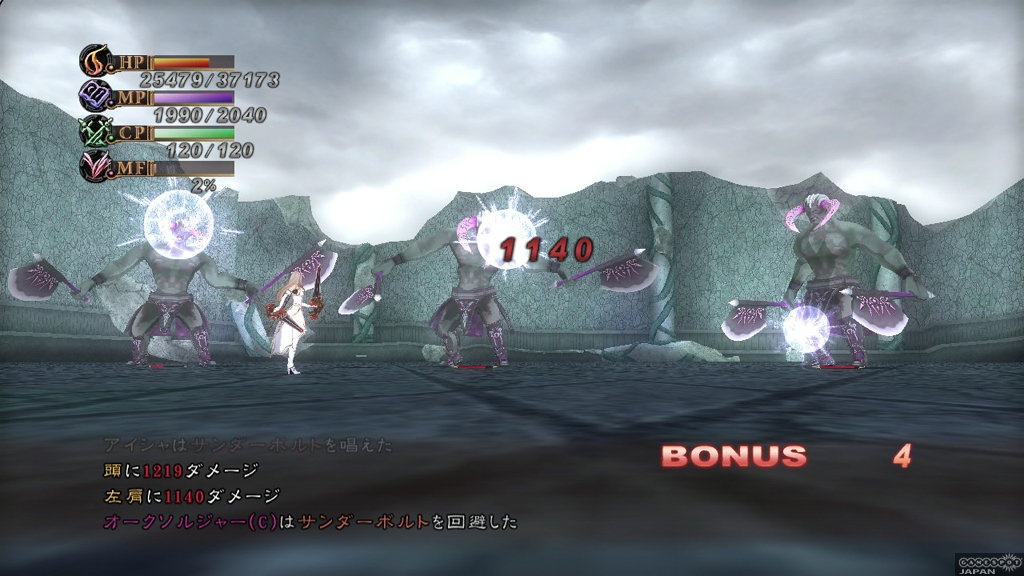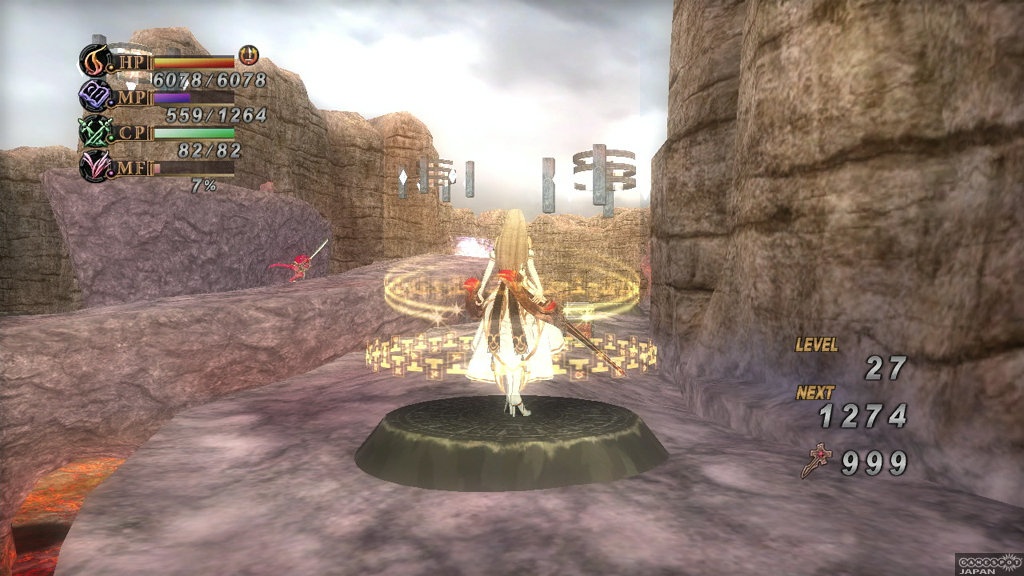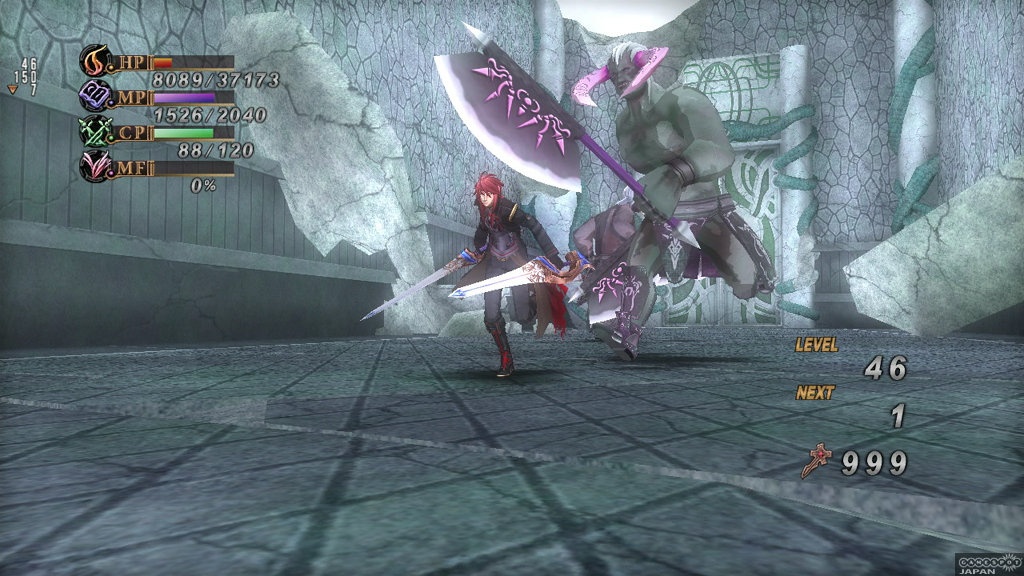Last Rebellion is a role-playing game that relies on a novel combat mechanic to differentiate itself from the crowd. You take control of two separate characters at the same time, attached by one durable soul, and can switch freely between them as you pound your enemies into submission. But while this certainly sounds intriguing, the results are far too predictable. The action does not vary noticeably when switching up your hero, which make this game feel much less inventive than the core concept would have you believe. Furthermore, unfair difficulty spikes erect an all-too-frequent roadblock, and the dry story is little help in pushing you through this adventure. Last Rebellion initially stands out because of its wealth of zombies and crazy soul-sharing protagonists, but the rest of the game is too bland and boring to hold your attention for long.

The game opens in the Kingdom of Lorvin, where someone has upset the delicate balance of life and death by raising the dead and transforming all corpses into zombified monstrosities. You're cast as Nine, a spiky-haired prince joined by Aisha, a priestess capable of sealing the souls of the undead. When a sneaky usurper slaughters the king and flees, both Nine and Aisha embark on a mundane and predictable quest of revenge. The story is vapid but confusing, and the minuscule cast and boring, cliched romantic themes will keep you from getting invested.
The turn-based combat is slow-paced and tedious. Aisha and Nine operate as a duo sharing the same soul, meaning that they share health points and mana but each receives a distinctive turn. Instead of just tossing you against standard monstrous hordes, the game splits each enemy into set body parts. Attacking a single part spends a chain point (CP) and temporarily "stamps" the part for magical attacks; the idea is to stamp as many body parts as you can before casting spells, which target all stamps on the field. "Sealing" is an interesting and unusual mechanic with which you seal a dead monster's soul before it can regenerate, but it's annoying when your seals miss for no discernible reason. For more irksome novelty, body parts implement a strike order system; attacking three parts in the correct order triggers a combo, which increases your damage. Unfortunately, determining the strike order is a slow and arduous process involving some luck, since enemies have anywhere from seven to 10 parts, resulting in an aggravating guessing game that's worsened by your enemies' enormous amounts of health. This means that you frequently run low on CP because you're practically forced to combo--and thus must master each enemy type's strike order--to deal any significant damage. The overall difficulty therefore hinges on your allotted chain points, which is especially irritating because you're initially given so few to work with. The artificial difficulty eventually plummets when you've secured sufficient chain points, making even bosses pushovers, but at this point the game is nearly done.
While some may appreciate the challenge posed by monsters with massive amounts of health, the big numbers mean that it takes a while to wear them down. That's fine on your first attempt, but it's not much fun when you're forced to repeat encounters after failing. This is an all-too-common scenario, because when one of your characters succumbs to a status effect--sleep or confusion, for example--the other one does too. This means that the status effect damages you twice in a single round and can be hard to remedy, which is a bit irritating and about the only time the soul-sharing feature comes into play.

One of the game's most disappointing aspects is that the primitive and outdated combat rarely changes. Aisha and Nine's ability to switch places during combat adds very little tactically, and the focus on CP conservation reduces most of your strategizing to spell-spamming. Enemies do have "weak points" that you can attack for higher damage, but striking the points out of order sends enemies into a deadly rage, so this technique is best avoided until you've mastered the strike order. You develop a few special abilities beyond sealing, one of which grants you the power to summon a goddess; however, she's only good for pointing out the strike order for an enemy's weak points, and you have to fill a lengthy damage bar before you can even summon her. Your party comprises only Nine and Aisha, which is extremely aggravating because you're usually facing multiple foes. The combat also isn't helped by a lack of enemy variety that, while it makes it easier to memorize strike orders, sees you doing battle with palette-swapped monsters reusing the same tactics over and over again.
Exploration is severely limited and occurs in small dungeons. Environments are desolate and composed of very simplistic, movement-based "puzzles" that often require you to go from point A to point Z via warp devices. This makes what little exploration there is neither compelling nor challenging, and the enemies that respawn quickly and routinely hound you while you're traversing a region are mostly just irritating. Areas are so barren that there's not much to do aside from slaughtering zombie ogres and opening treasure chests. There's a complete dearth of side quests, and there are very few characters and objects to interact with. There's also plenty of tedious backtracking, much of which is mandatory.

Aesthetically, the game is plain and outdated, with crude character models and empty environments that appear similar to what you'd expect from a last-generation console game. You won't find much in the way of architecture, with bland cavernous dungeons and the occasionally rudimentary hut sufficing for decor, but at least the spells are eye-catching. Cutscenes are somewhat cheapened by primitive portraits that stand in for character models, but a few of these are vividly painted and appealing. Simplistic sound effects and exaggerated, melodramatic voicing enhance the archaic and banal feel, with unusual sound errors that randomly interrupt the generic battle music.
Last Rebellion isn't just bad, it's also relatively short. The whole experience lasts roughly 15 hours, the first 10 of which are occasionally grueling while the last five feel like padding. Between its rough, unfinished feel and instantly forgettable story, there's little motivation to finish the game let alone replay it, and when the difficulty finally settles down, it drops too much, and the aggravating journey is already approaching its end. Last Rebellion is as hollow and soulless as its barren landscapes and empty gameplay.